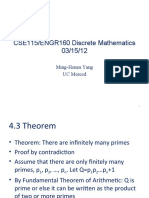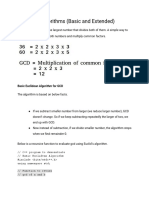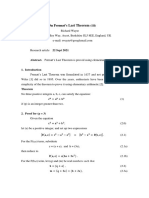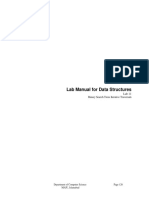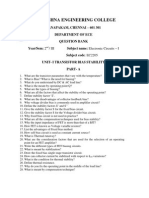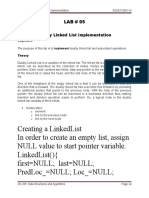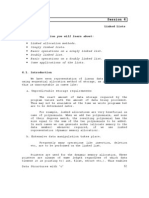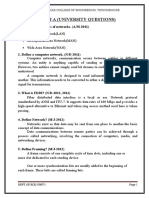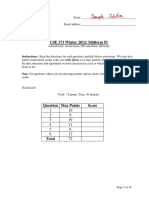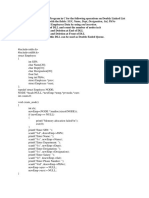0% found this document useful (0 votes)
150 views129 pagesLecture 14-AVL Trees Lecture
This document provides an overview of AVL trees, a self-balancing binary search tree data structure. It begins by defining height balancing and the requirements for an AVL tree. An AVL tree must have a balance factor of at most 1 between the heights of its left and right subtrees, and both subtrees must themselves be AVL trees. The document then discusses techniques for maintaining the balance of an AVL tree during insertions and deletions through rotations. It analyzes the height of AVL trees, showing they have an optimal O(log n) height like balanced binary search trees.
Uploaded by
Nicolas DarkholmeCopyright
© © All Rights Reserved
We take content rights seriously. If you suspect this is your content, claim it here.
Available Formats
Download as PDF, TXT or read online on Scribd
0% found this document useful (0 votes)
150 views129 pagesLecture 14-AVL Trees Lecture
This document provides an overview of AVL trees, a self-balancing binary search tree data structure. It begins by defining height balancing and the requirements for an AVL tree. An AVL tree must have a balance factor of at most 1 between the heights of its left and right subtrees, and both subtrees must themselves be AVL trees. The document then discusses techniques for maintaining the balance of an AVL tree during insertions and deletions through rotations. It analyzes the height of AVL trees, showing they have an optimal O(log n) height like balanced binary search trees.
Uploaded by
Nicolas DarkholmeCopyright
© © All Rights Reserved
We take content rights seriously. If you suspect this is your content, claim it here.
Available Formats
Download as PDF, TXT or read online on Scribd
/ 129












